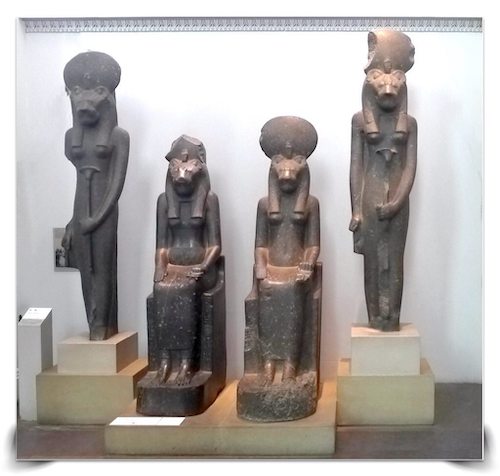
Sekhmet, the Lion-Headed Goddess of War
Margaret Atwood
He was the sort of man
who wouldn’t hurt a fly.
Many flies are now alive
while he is not.
He was not my patron.
He preferred full granaries, I battle.
My roar meant slaughter.
Yet here we are together
in the same museum.
That’s not what I see, though, the fitful
crowds of staring children
learning the lesson of multi-
cultural obliteration, sic transit
and so on.
I see the temple where I was born
or built, where I held power.
I see the desert beyond,
where the hot conical tombs, that look
from a distance, frankly, like dunces’ hats,
hide my jokes: the dried-out flesh
and bones, the wooden boats
in which the dead sail endlessly
in no direction.
What did you expect from gods
with animal heads?
Though come to think of it
the ones made later, who were fully human
were not such good news either.
Favour me and give me riches,
destroy my enemies.
That seems to be the gist.
Oh yes: And save me from death.
In return we’re given blood
and bread, flowers and prayer,
and lip service.
Maybe there’s something in all of this
I missed. But if it’s selfless
love you’re looking for,
you’ve got the wrong goddess.
I just sit where I’m put, composed
of stone and wishful thinking:
that the deity who kills for pleasure
will also heal,
that in the midst of your nightmare,
the final one, a kind lion
will come with bandages in her mouth
and the soft body of a woman,
and lick you clean of fever,
and pick your soul up gently by the nape of the neck
and caress you into darkness and paradise.
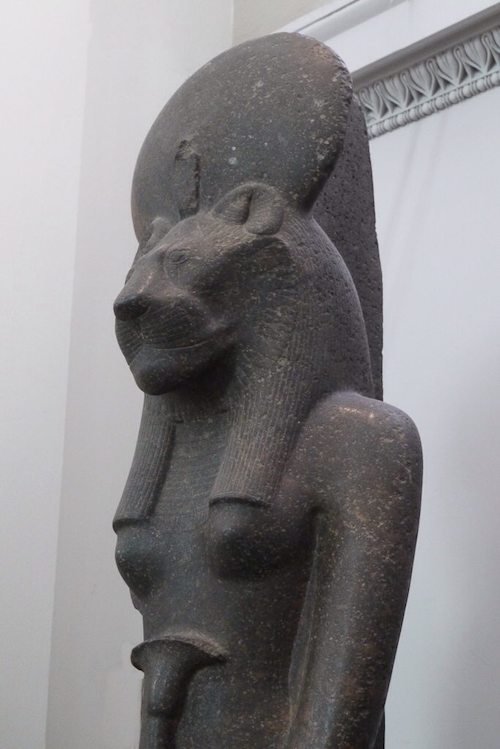
I happened to remember this beautiful poem by Margaret Atwood, one of my favorite poets, and thought it would be really appropriate here. Sekhmet is the Egyptian goddess of the sun, war, destruction, plagues and healing, an interesting combination of duties. She is one of the oldest deities and one of the most powerful. She is said to be the daughter the sun god Ra created when his eye looked upon the earth. She is also sometimes seen as a daughter of Nut, the sky and Geb, the earth. She often holds the ankh, the symbol of life, when seated. When standing or striding, she is seen holding the papyrus scepter symbolizing Lower Egypt as you see above. According to myth, she was the fiery eye of Re (or Ra), which he sent against his enemies. In this form she also appeared as the cobra on the brow of the king, rearing to protect him.
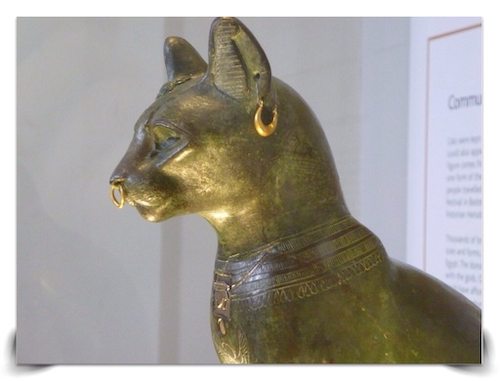
When Upper Egypt in the South conquered Lower Egypt in the delta area, the Pharaoh brought the cult of Sekhmet with him. She was viewed as a replacement for Bast or Bastet, who was deemed to be less powerful because Sekhmet's Pharaoh had conquered Bast's territory. Bast became the deity of household cats, who were highly regarded and often mummified with their owners. The gold jewelry is accurate, cats were often given golden jewelry because of their role in killing mice and rats which threatened key food supplies, and snakes, especially cobras. As divine mother, and more especially as protector for Lower Egypt, Bastet became strongly associated with Wadjet, the patron goddess of Lower Egypt. She eventually became Wadjet-Bast, paralleling the similar pair of patron Nekhbet and lioness protector Sekhmet for Upper Egypt. Egyptians would often wear bracelets with kittens on them to promote fertility.
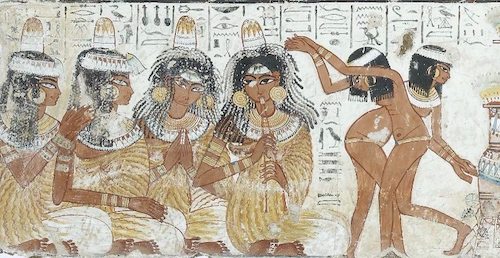
Sekhmet was known as the “Red Lady” indicating her alignment with the western desert and for the following story involving bloodlust. As the sun god Ra grew older, he became concerned about his enemies and asked Hathor to help him. She took on the job with a vengeance and turned into Sekhmet, the lioness goddess. She took delight in killing people and drinking their blood. Ra then worried that Sekhmet would wipe out the entire human race, so he arranged for red dye to be mixed into beer and spread about the land. Sekhmet, thinking it was blood, drank it and became so intoxicated that she forgot her assignment. As a result, humankind was saved. Pacified by the beer, she resumed her persona as the beautiful Hathor and returned to Ra. The saving of mankind was commemorated every year on the feast day of Hathor/Sekhmet, during the first month of the year, just after the first flooding of the Nile, when it turned red from Ethiopian silt. Everyone drank beer stained with pomegranate juice and worshipped “the Mistress and lady of the tomb, gracious one, destroyer of rebellion, mighty one of enchantments”. Also, to pacify Sekhmet, festivals were celebrated at the end of battle, so that the destruction would come to an end.
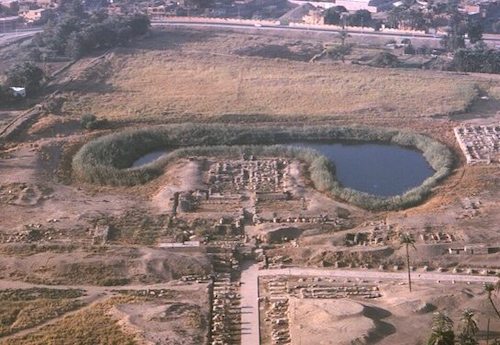
Betsy Bryan, who has been leading an excavation effort at the Temple of Mut since 2001 turned up what appears to have been a “porch of drunkenness,” associated with Hatshepsut, the wife and half-sister of Thutmose II, built around 1470 BC. The temple of Karnak was known as Ipet-isut (most select of places) by the ancient Egyptians. It is a city of temples built over a period of 2000 years and dedicated to the Theben triad of Amun (also Amun-Ra), Mut (wife of Amun) and Khonsu (moon god… notice the moon shape of the lake above). Construction continued on this temple for more than two millennia under the belief that once building ceased, the temple “died.” The temple was a closed compound, open only to the priests and the pharaoh. The common people could only enter the courtyard. Mut and Sakhmet, along with Isis, Hathor, Bastet, and several other deities, belonged to a group of goddesses known as the “Eye of Re,” (or Ra) who could be both gentle cats and fierce lionesses. As Mut was both the consort of Amun and an Eye of Ra her temple precinct in Thebes was an important religious center for almost two thousand years. Yet until the last quarter of the twentieth century, the goddess and her cult were hardly known and her precinct had been little explored.
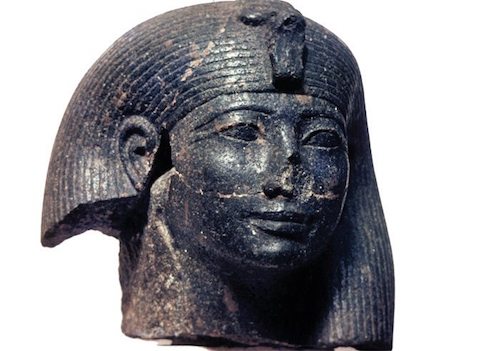
The Queen Hatshepsut had the ancient temple to Mut at Karnak rebuilt during her rule in the Eighteenth Dynasty. She lived between 1508 and 1458 BC, ruling Egypt for about two decades. Previous excavators had thought that Amenhotep III had the temple built because of the hundreds of statues found there of Sekhmet that bore his name. However, Hatshepsut, who completed an enormous number of temples and public buildings, had completed the work seventy-five years earlier. She began the custom of depicting Mut with the crown of both Upper and Lower Egypt. It is thought that Amenhotep III removed most signs of Hatshepsut, while taking credit for the projects she had built. When the center of power shifted from Memphis (near Cairo) to Thebes (modern Luxor) during the New Kingdom, around 2000 BC, Sekhmet's attributes were absorbed into that of Mut. Hatshepsut was a woman pharaoh who brought Mut into prominence again in the Egyptian pantheon, identifying strongly with the goddess. She stated that she was a descendant of Mut. She also associated herself with the image of Sekhmet, as the more aggressive aspect of the goddess, having served as a very successful warrior during the early portion of her reign as pharaoh.
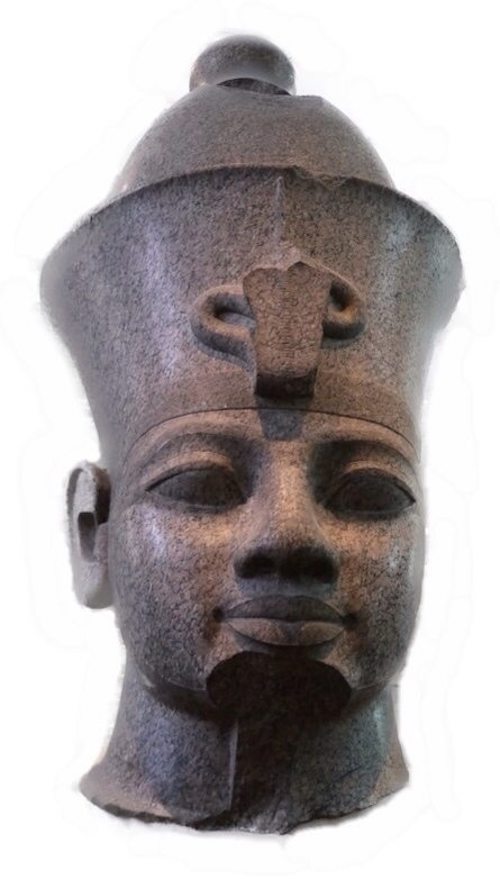
King Amenhotep III (1390-1352 BC) obviously especially revered Sekhmet, as he had an enormous quantity of statues of her erected in his mortuary temple in Western Thebes. There may have originally been 730 statues (one seated and one standing for each day of the year). Apparently, sacrifices were made daily to appease Sekhmet. The statues may have been reused from the temple of Mut and thus created by Hatshepsut rather than Amenhotep III. The British museum has about 20 of the Sekhmet statues. Later in the same dynasty, Akhenaten, son of Amenhotep III, suppressed the worship of Mut as well as the other deities when he promoted the monotheistic worship of his sun god, Aten. Tutankhamun later re-established her worship and his successors continued to associate themselves with Mut afterward. The statue shown with an inscription by Tutankhamun below is about eight feet long and is considered one of the masterpieces of ancient naturalistic art. The eyes were originally inset with gems.
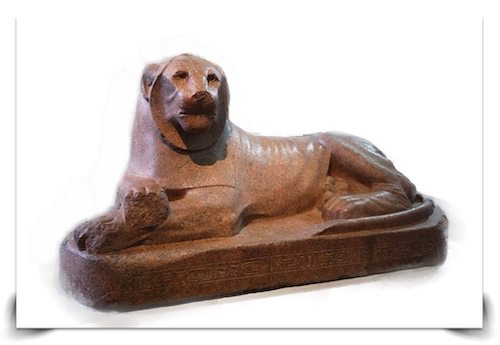
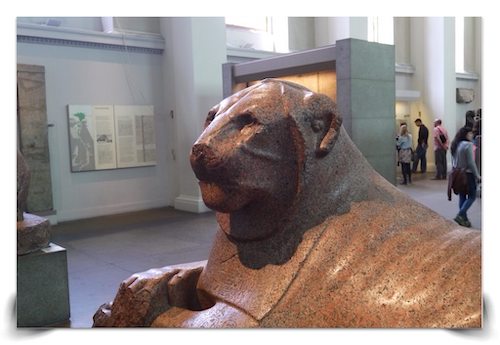
References:
NBC Sex and Booze: http://www.msnbc.msn.com/id/15475319/#.UJ4JH5G9KK1
Virtual Egyptian Museum: http://www.virtual-egyptian-museum.org/Collection/FullVisit/Collection.FullVisit-FR.html
Brooklyn Museum Mut: http://www.brooklynmuseum.org/features/mut/
Betsy Bryan: http://www.arce.org/expeditions/featuredexpeditions/u36
Zenobia Queen of the East: http://judithweingarten.blogspot.com/search?q=Hatshepsut

